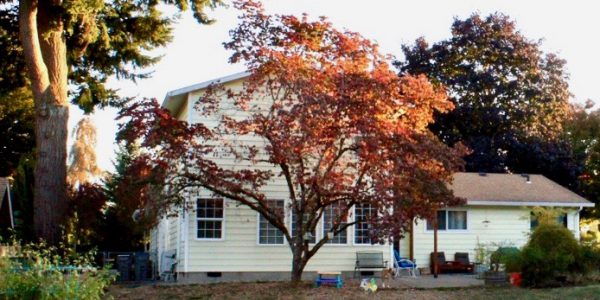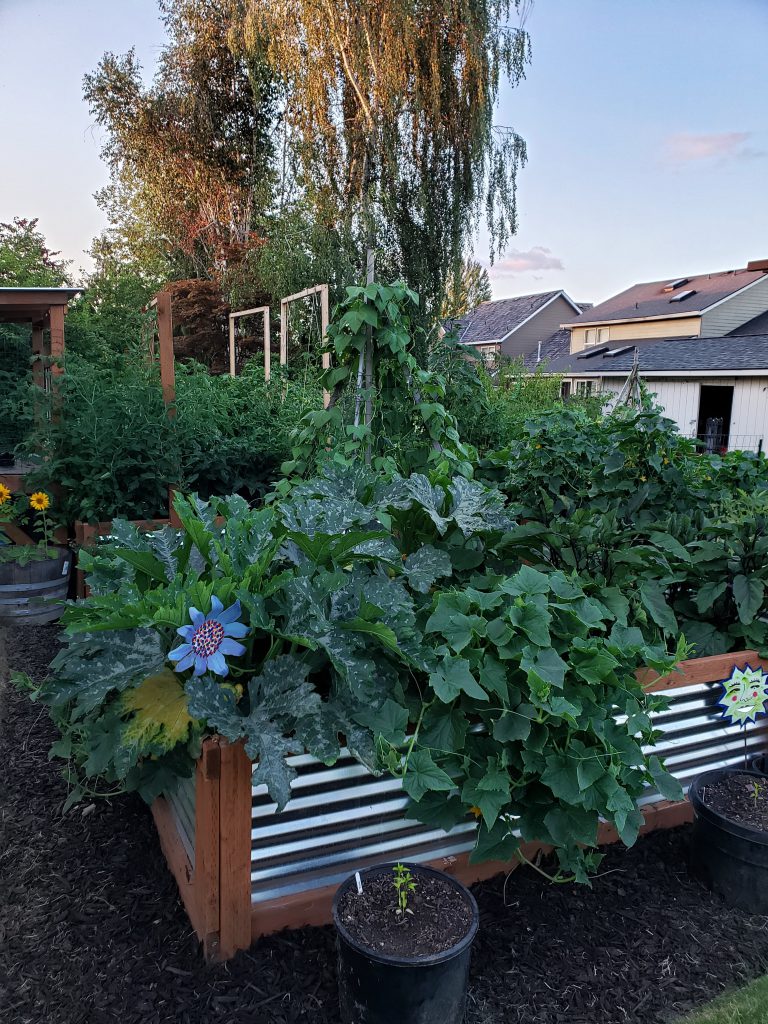
Dear Tygh and Shelly,
This should probably end up being a page, but I want to start by just writing some of the things that we have learned over the spring and early summer. I know she will have a few additions to this, so I am calling this part 1.
Labeling
Not surprisingly, knowing what we are planting is important. Surprisingly, it can be hard to tell plants apart even when they are starting to get pretty big. This is especially true of plants like zucchini and squashes. They tend to look very similar in the beginning and only later do they begin to differentiate and become easier to tell apart. In some cases, you can’t tell until veggies start showing up on the vines.
Blossom End Rot
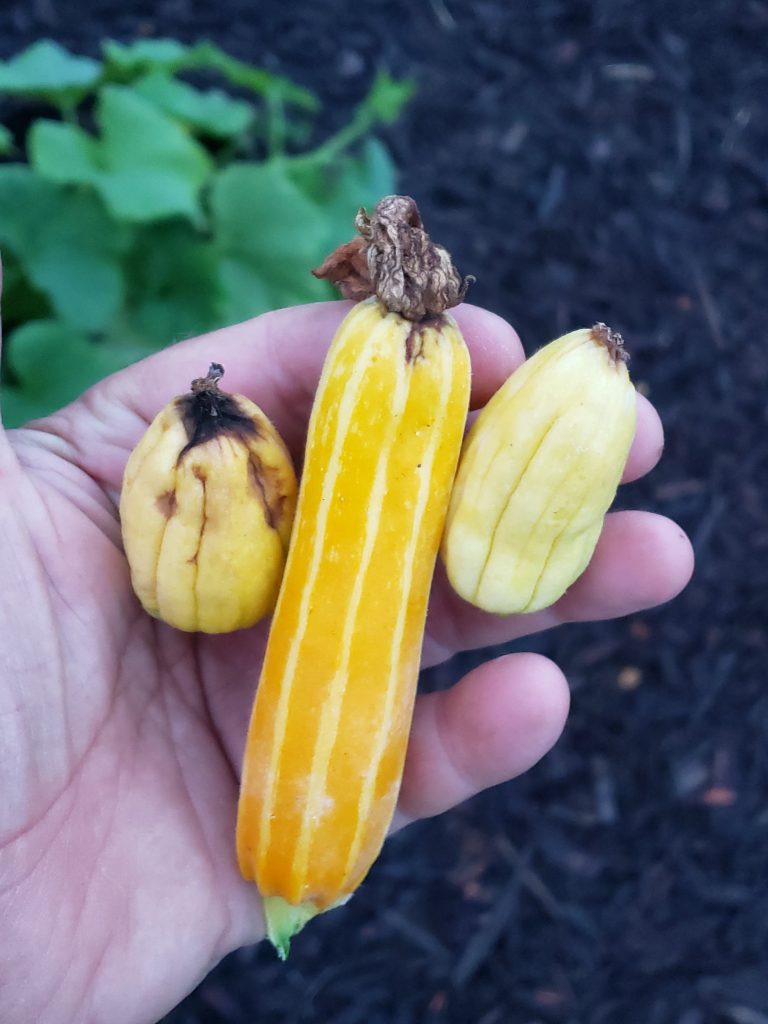
It turns out that like peppers and tomatoes, squash and zucchini are susceptible to this malady as well. It is caused by a general lack of calcium and results in sickly veggies that have squishy ends (the blossom end). It also turns out that calcium deficiency can also be caused by excessive nitrogen. Because our soil is mostly compost and manure, it is loaded with nitrogen and so it’s important to use some garden lime when planting.
We’ve added some lime now and are just pulling all the affected veggies we find.
Spaghetti Squash
Our raised beds are approximately 3.5 x 8 feet in size. we planted several spaghetti squash plants in a single bed and what we are seeing is essentially a Jumanji jungle situation where the vines have spilled out between the boxes and are making it hard to get around.
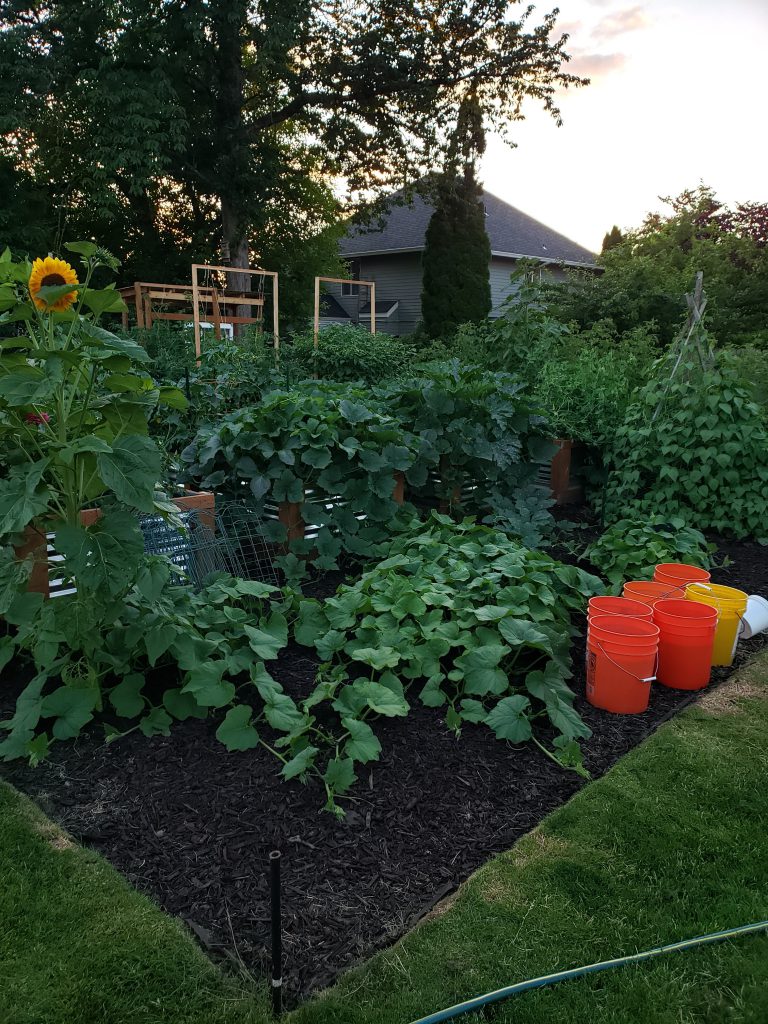
Lemon cucumbers

The lemon cucumbers seem quite willing to grow up the sides of the bean teepee. This means that the tangled mess we have had in the past may be a bit easier to manage if we plant them at the base of the teepees.
Beans
Beans always say not to start them inside, but here’s the thing, a baby bean plant is maybe the most vulnerable plant we have to slugs and snails. When we start beans in the ground they are often murdered by slugs before they even get a chance to unfurl their leaves. If we start them in the greenhouse, they have a chance to get big enough to survive the nightly onslaught.
They do slow down for a couple of weeks once they are transplanted, but they live, and they still produce plenty of beans.
Tomatoes
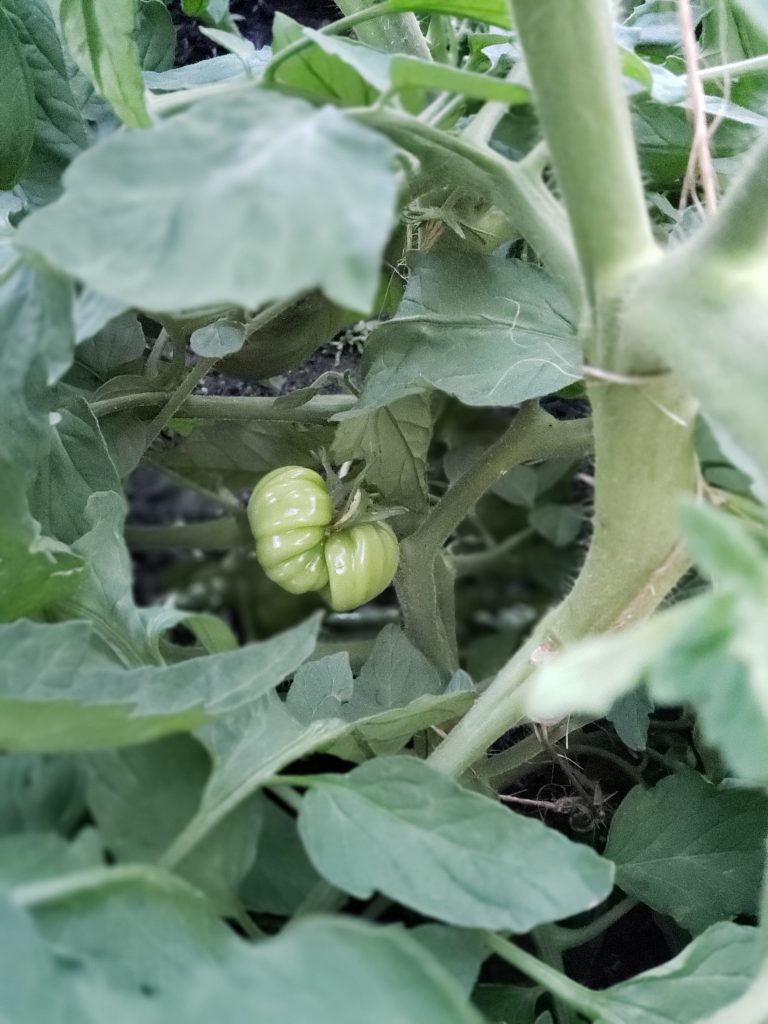
We definitely have a strong-looking crop of tomatoes this year. I might suggest that we have crowded them a bit much. Also we planted a few container tomatoes in the back of the garden where they are too short to get very much light.
Our plants last year didn’t get anywhere near as big as they have this year and so we need to take note and consider that one plant can truly produce a large crop of toms if it is properly cared for and pruned.
We have strung several of them up as opposed to using cages and they are doing very well. I see that they are going to get too big for the strings I have, but we’ll cross that bridge when we get there.
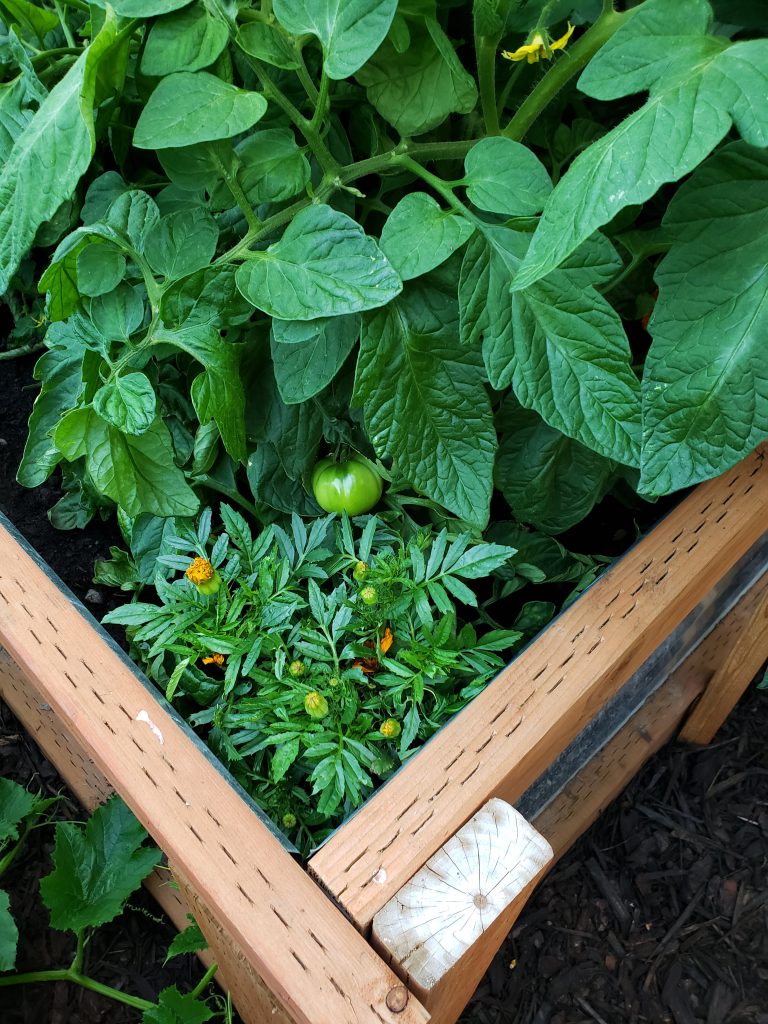
Next year:
- Label every little thing
- Spaghetti squash on the ground, or maybe trellis
- One Zucchini mound with two plants = half of a raised bed
- Ditto for acorn Squash
- Cucumbers can grow up one of the bean teepees
- Beans start in the greenhouse and transplant when they are big enough
- Tomatoes: plant two to a side of each raised bed on the diagonal so that they are staggered four across (back, front, back front). Continue to prune as we have done this year. Also, the strings are doing well at keeping them from falling over, but this has to be combined with aggressive pruning.
Next time: peppers, tomatillos, pickling cucumbers, okra, peas, carrots, spinach, lettuce, broccoli rabe, beets and radishes
